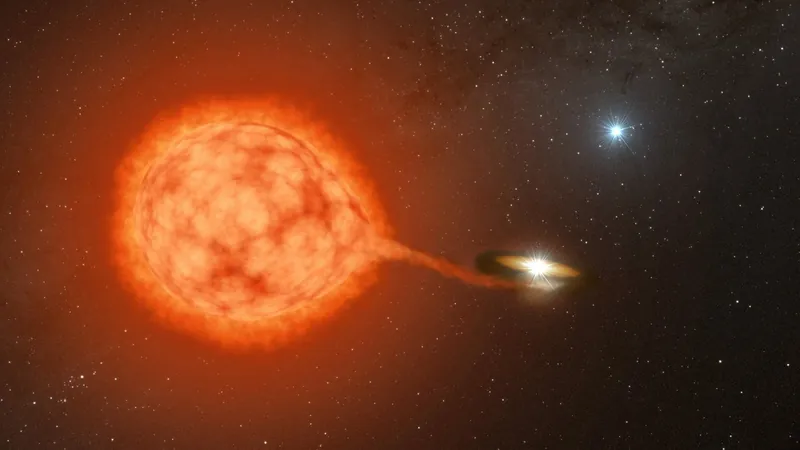
Revolutionary Discovery: A Third Star Might Spark Explosive Star Systems!
2025-07-09
Author: Arjun
Could the cosmos be a little more complicated than we thought? A groundbreaking study led by astronomers at Caltech suggests that certain explosive star systems, known as cataclysmic variables (CVs), may owe their fiery existence to a lurking third star!
The Mystery of Cataclysmic Variables Unveiled
Typically, cataclysmic variables form when white dwarfs—the remnants of stars similar to our Sun—gobble up mass from a close companion star, sparking dramatic eruptions called novae. For years, scientists believed this mass transfer was initiated through a process called common envelope evolution, where stars nestle closer inside a shared gaseous ‘envelope’.
The Stunning Twist: Enter the Third Star!
However, recent findings led by astronomer Kareem El-Badry reveal a surprising twist in this stellar saga. The study indicates that a third star, orbiting the primary star pair at a distance, could actually be the catalyst that brings the two stars together in the first place. "Our results are revealing another formation channel for CVs," El-Badry explains. This insight comes from research co-authored by Caltech graduate student Cheyanne Shariat.
Deep Dive into the Data
To unravel these cosmic relationships, researchers sifted through data from the now-retired Gaia mission and identified 50 cataclysmic variables existing within hierarchical triple-star systems—a configuration where two stars are in close proximity while a third keeps its distance. Their findings suggest that at least 10% of all known CVs belong to such triple systems, a figure that far surpasses expectations.
Astounding Simulations Illuminate Stellar Dynamics
To further explore this theory, the team performed extensive simulations on over 2,000 hypothetical triple-star systems. The results were striking: in 20% of these simulations, cataclysmic variables formed without the traditional common envelope evolution. Instead, the third star influenced the binary stars' orbits, pulling them closer together and igniting the explosive interactions.
Looking Ahead: Cosmic Predictions and Observations
In the remaining simulations, some systems engaged in the typical method of common envelope evolution, while others initiated this process thanks to the gravitational tug of the third star. When the researchers accounted for the actual population of stars in our galaxy, their models predicted that nearly 40% of all cataclysmic variables could be linked to triple-star systems—far more than the initial 10% identified.
A Wider Cosmos: What This Means for Our Understanding
Interestingly, the data showed that CVs in triple systems generally had larger separations from their companions, indicating they may start off wider before converging. El-Badry emphasizes, "For the past 50 years, people have relied heavily on the common-envelope model to explain the formation of CVs. This study uncovers that many of these formations likely happen in triple systems that had gone unnoticed!"


 Brasil (PT)
Brasil (PT)
 Canada (EN)
Canada (EN)
 Chile (ES)
Chile (ES)
 Česko (CS)
Česko (CS)
 대한민국 (KO)
대한민국 (KO)
 España (ES)
España (ES)
 France (FR)
France (FR)
 Hong Kong (EN)
Hong Kong (EN)
 Italia (IT)
Italia (IT)
 日本 (JA)
日本 (JA)
 Magyarország (HU)
Magyarország (HU)
 Norge (NO)
Norge (NO)
 Polska (PL)
Polska (PL)
 Schweiz (DE)
Schweiz (DE)
 Singapore (EN)
Singapore (EN)
 Sverige (SV)
Sverige (SV)
 Suomi (FI)
Suomi (FI)
 Türkiye (TR)
Türkiye (TR)
 الإمارات العربية المتحدة (AR)
الإمارات العربية المتحدة (AR)